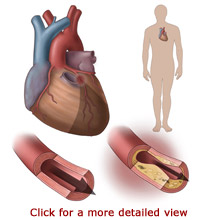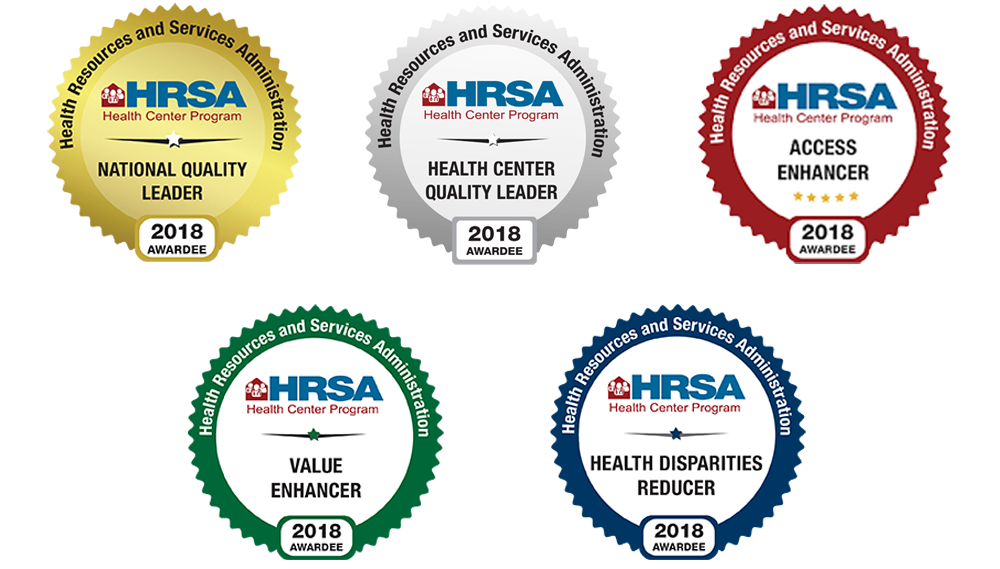 Heart disease, also called cardiovascular disease, is a common problem in the United States. It occurs when the heart and blood vessels do not function properly. The most common cause is narrowing or blockage of the arteries that supply blood to the heart, but it is also caused by a variety of disorders that can impair heart or vascular functioning. There are numerous forms of heart disease including arteriosclerosis, angina, congestive heart failure, heart attack, and stroke. Heart disease can be life threatening. Certain risk factors for heart disease can be reversed. Heart disease is treated with lifestyle changes, medications, and surgery.
Heart disease, also called cardiovascular disease, is a common problem in the United States. It occurs when the heart and blood vessels do not function properly. The most common cause is narrowing or blockage of the arteries that supply blood to the heart, but it is also caused by a variety of disorders that can impair heart or vascular functioning. There are numerous forms of heart disease including arteriosclerosis, angina, congestive heart failure, heart attack, and stroke. Heart disease can be life threatening. Certain risk factors for heart disease can be reversed. Heart disease is treated with lifestyle changes, medications, and surgery.
Anatomy
Your heart contains four chambers. The chambers are separated by the septum, a thick muscle wall. There are two chambers on each side of your heart. The top chambers are called atria, and they receive blood. The bottom chambers are called ventricles, and they send blood.
Your heart contains a right and left pumping system. Your left atrium receives oxygenated blood from the lungs, and your left ventricle sends it out to your body. Your right atrium receives deoxygenated blood from your body, and your right ventricle sends it to your lungs.
Four heart valves prevent the blood from back flowing as the blood moves forward through the heart chambers. The mitral valve and the tricuspid valve regulate blood flow from the atria to the ventricles. The aortic valve and the pulmonary valve control blood as it leaves the heart. The first sound of your heartbeat is from the mitral valve and the tricuspid valve closing. The second sound in your heartbeat occurs when the aortic valve and the pulmonary valve close after the blood leaves your heart.
Arteries are blood vessels that carry oxygenated blood away from your heart. The aorta is the largest blood vessel in your body. The aortic valve separates the left ventricle from the aorta. The coronary arteries branch off of the aorta and supply the heart with oxygen, blood, and nutrients to keep it healthy. The pulmonary artery carries deoxygenated blood from the right ventricle to the lungs.
Veins are vessels that carry blood from your body and lungs back to your heart. Your two largest veins are the superior and inferior vena cavae. They are located above and below your heart.
The large arteries and veins surrounding the heart branch out and become smaller throughout your body. Small capillaries connect the arteries and veins. Capillaries deliver oxygen and nutrients to all of the cells in your body. They also remove waste products, such as carbon dioxide.
Causes
There are numerous forms of heart disease. Common types of heart disease include arteriosclerosis, angina, congestive heart failure, heart attack, and stroke. Arteriosclerosis is a hardening and narrowing of the arteries caused by cholesterol, fat, and calcium buildup. Arteriosclerosis impedes blood flow and can lead to blood clots. Angina is chest pain that occurs when the heart does not receive enough blood because of blockages or coronary artery spasms. Congestive heart failure develops when the heart cannot pump enough blood for the body. A heart attack occurs when the heart muscle cells do not receive oxygenated blood and the heart cannot function. A stroke occurs when the brain does not receive oxygenated blood. There are many other forms of heart disease that affect the blood vessels and the heart structures.
Symptoms
Diagnosis
Common tests include an electrocardiogram (ECG), echocardiogram, exercise stress test, carotid artery scan, coronary angiography, and nuclear ventriculography (MUGA or RNV). An ECG records the heart’s electrical activity. An ECG may be repeated over several hours. An echocardiogram uses sound waves to produce an image of the heart on a monitor. An exercise stress test checks the heart's ability to respond to exercise. You will walk on a treadmill or pedal a stationary bike while an ECG records your heart’s activity. A carotid artery scan uses sound waves to check for blockages in the carotid artery, a main blood vessel in the neck that supplies the brain. Coronary angiography involves inserting a long narrow tube through a blood vessel and injecting dye into the heart to see how the heart and coronary arteries are working. A nuclear ventriculography involves using a safe radioisotope injection to produce an image of the heart with special scanners. The heart structures may also be viewed with imaging scans including computed tomography (CT) scans and magnetic resonance imaging (MRI) scans.
Treatment
If your doctor finds that you have heart disease, but it is not an emergency, your condition may be treated with lifestyle changes, medications, or surgery. Treatment for heart disease is focused on relieving symptoms and preventing progression of the disease. You should make lifestyle changes to keep your heart and cardiovascular system healthy. This may include maintaining a healthy weight, not smoking, not drinking alcohol, not using illegal drugs, eating healthy foods, and regular aerobic exercise. Your doctor may advise you to restrict your salt and fluid intake.
You should keep your blood pressure, cholesterol, and blood sugar levels within healthy ranges. There are several types of medications that your doctor may prescribe depending on the type of heart disease that you have. You should take all of your medications as instructed. Follow up care is necessary to monitor your condition and to avoid associated medical complications.
Depending on the severity and type of heart disease, there are several types of surgery for the heart and cardiovascular system. Common surgeries include coronary angioplasty, bypass surgery, atherectomy, carotid endarterectomy, pacemakers, and valve replacement. A coronary angioplasty is used to open blocked coronary arteries. A stent may be inserted to ensure that the coronary artery remains open after this procedure.
Coronary artery bypass surgery (CABG) involves taking a blood vessel from another part of the body to create a detour around the clogged artery to restore blood flow to the heart. Blood vessels are commonly taken from the leg and surgically attached to the coronary artery. It may be necessary to have bypass surgery on one or more coronary arteries.
An atherectomy is a procedure that removes plaque from an artery to improve blood flow. A carotid endarterectomy removes plaque from the carotid arteries to prevent a stroke. Heart valve replacement and implanted pumps, pacemakers, and defibrillators may be necessary to help the heart function. Select people may be candidates for a heart transplant surgery.
Prevention
If you have been diagnosed with heart disease, follow your doctor’s instructions carefully. Make and keep all of your appointments. Be sure to take all of your medications as directed.



